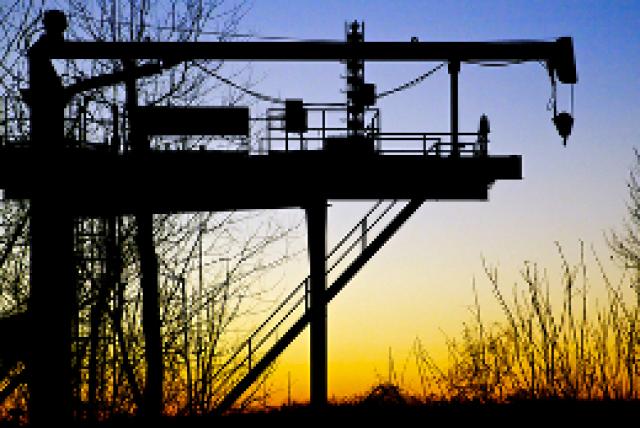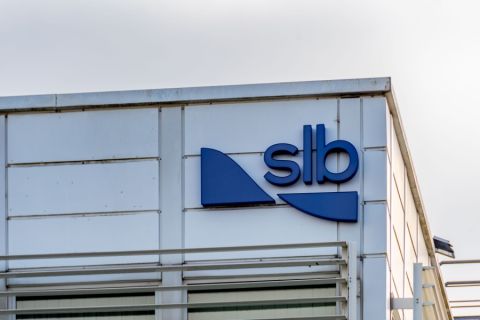
Robust natural gas prices, new technology-and persistence-are improving drilling economics and success rates in northern Louisiana, making it attractive to exploration and production companies large and small.
Renewed focus in this area may be due to high prices, but operators claim drilling here would still be economic if gas sold for $2.50 or $3 per thousand cubic feet. Companies seem more disciplined than in the past, devoting more lead time to area-wide geological and geophysical studies and reducing costs.
It certainly helps that the stacked sands in the Hosston and Cotton Valley formations here can range from six inches to 15 feet thick, with a gross interval thousands of feet thick. As soon as one zone depletes, the operator just moves uphole.
Anadarko Petroleum Corp., for one, is so enthusiastic that it plans to keep 12 rigs running all year in its Vernon Field in Jackson Parish east of Shreveport. The company estimates it may recover 1- to 1.4 trillion cubic feet of gas (gross) at Vernon, which the E&P team calls "the next Bossier," referring to its blockbuster East Texas tight-gas play not far away, and not too dissimilar.
Smaller independents are also making their mark in the area. All the companies are reinterpreting existing seismic data or shooting new 3-D to develop prospects below or surrounding existing fields. They are bringing the newest techniques to bear, such as digital log analysis, multi-stage fracture stimulation employing up to 1.5 million pounds of proppant, better bits and drilling mud, and team work.
This is good news in a state whose production is declining, and whose onshore rig count lags the pace set elsewhere. In January 2004, Louisiana was the only state among the top five producers to report a lower onshore rig count than in January 2003, much to the distress of Don Briggs, executive director of the Louisiana Independent Oil & Gas Association (LIOGA).
"I'm very upset about these numbers. In 2003, rig activity was down 2% onshore and in our coastal waters, compared with being up 24% in Texas and 49% in Oklahoma. Our numbers would have been worse if not for activity in northern Louisiana, which was up 50%," he says.
"We are very concerned about the environment for business in Louisiana. Our 3-D costs are too high, the permitting process is too long, and independents can go to many other states."
Yet activity may pick up this year: in 2003 the state issued 1,328 drilling permits, a 24% increase from 2002 numbers, according to Jim Welsh, Louisiana Department of Natural Resources Conservation Commissioner in Baton Rouge.
Many of those permits were issued to Anadarko, which holds more than 130,000 net acres, mostly in Jackson Parish, but also in Ouachita, Lincoln and Bienville parishes.
Vernon Field
In Jackson Parish, Anadarko holds a 97% working interest in Vernon Field. From six rigs working last fall, the Houston company has increased its pace to 10 working at press time and planned to run 12 throughout 2004. It hopes to drill about 80 wells and perform at least 240 frac jobs there this year.
Since acquiring the mid-1980s-vintage field from Exco Resources in late 1999, the company has drilled 130 wells and boosted gross production to 207 million cubic feet a day from just 5 million a day. At the same time, it has reduced costs and drill time by applying what it learned at the Carthage and Bossier fields in Texas during the past decade.
In the heart of Vernon, the average well produces 6- to 8 billion cubic feet (Bcf) over its life, but on the edges a well is more apt to produce 4- or 5 Bcf. Spacing was formerly on 160 acres but last year Anadarko drilled on 80-acre spacing and this year, it will drill to 40.
This basin-centered, unconventional tight-gas play is typical of northern Louisiana-it sits under heavily forested paper-company mineral acreage, in this case, mostly owned by Weyerhaeuser Co. and Willamette. To avoid sensitive wetlands, the company drills from relatively small pads and directionally as needed.
Other issues include protecting habitat and wildlife such as deer and the endangered red-cockaded woodpecker. The National Turkey Federation is providing Anadarko with a special seed blend to be planted along gathering line rights-of-way, rather than regular grass or millet. The lush grass has resulted in a growing turkey population. Numerous hunting blinds line the rights-of-way and logging roads that snake through the forest.
Below ground, Vernon features multiple stacked pays requiring large frac jobs in as many as three to five zones per well, to unlock reserves that will produce for many years to come. Each well is stimulated in at least three Lower Cotton Valley zones: the basal pool at 15,500 feet, the middle pool at about 14,800 feet and the upper stray at 13,500 feet.
Typical wells flow anywhere from 8- to 10 million cubic feet per day initially, but six months later, they settle down to 2- or 3 million a day, a rate that slowly declines for decades. In addition, the Hosston is a secondary objective that adds icing to the cake.
Anadarko is continuing to refine its drilling and completion practices to trim costs and increase production, says Bob Abendschein, operations manager, Houston division.
"On the drilling side we work closely with the bit and mud companies to try new things to improve efficiencies. On the completion side we're using what we learned from the East Texas Carthage and Bossier plays to improve fracturing. Vernon has a higher fracture gradient and temperatures than our other tight-gas plays in Texas, so the stimulations are evolving through better gel and pumping technology.
"Now, we can drill and complete a well for about $3 million versus $3.8 million before, and drilling times are down to about 40 or 45 days, versus 80 or more when we started. That's a big driver for us. Drilling deeper is not the only key here. We could not produce these wells without frac'ing them."
Adds Jeff Stahley, Vernon production manager: "As we drill more wells, we understand more about how they will behave, and we've reduced the cycle time. We have reduced our completion time from 25 days to just under 10 . We are always looking for ways to streamline the process."
In addition, the company shot some 3-D seismic in 2003 and thus, is now extending the field to the east, west and south. To the east, it has discovered the Ansley Field, which will occupy more attention this year. Seismic interpretation indicates the geology at Ansley is more complicated than Vernon, but the company is encouraged with its early results.
"I'd say Vernon is around 30% developed now, but we have the field expansion to go, and more infield drilling. We keep finding more to do as we extend and develop the field. We see Hosston possibilities we are just starting to develop and Upper Cotton Valley later," says Abendschein.
By year-end 2004, Anadarko plans to reach sustained production of 325 million cubic feet a day from about 210 wells. To the south, it is building an amine treating plant to increase gas marketability, with capacity of 150 million cubic feet a day. It will go online by May.
Anadarko is so pleased with its results that this year, it plans to construct a new building near Vernon. At its bustling temporary field office, the walls were covered with flow charts because 12 wells were drilling and seven were being completed, eight locations were drill-ready and waiting on a rig, and nine others were in some stage of site preparation.
"Since we are doing as many as six fracs per week, coordinating the logistics ahead of time-crews, trucks, vendors-is probably our biggest challenge," Abendschein says. "We could not pull off all this activity without a concerted team effort."
Sligo Field
"I'd rather have production in the ArkLaTex region than anywhere else," says Michael A. Geffert, president and chief operating officer of Greystone Petroleum LLC in Houston. "All the reservoirs are pressure-depletion and fairly shallow, the Btu content is fairly high, and drilling conditions are benign."
It took privately held Greystone more than six years of patience and negotiation, but finally it was able to acquire Sligo Field eight miles east of Shreveport, in Bossier Parish, which now is a cornerstone of the firm.
"We were dogged in our persistence," says Joe M. Bridges, chairman and chief executive officer. "We made our first purchase proposal to Pennzoil in May 1996 and kept making offers once or twice a year [to succeeding owners] until we finally bought it in February 2002 [from Devon Energy]. Gas was $2 and we were confident we could make our equity returns then. Now gas is close to $7 and the operating margins are just outstanding."
Because operating costs at Sligo are so low, the company could continue to produce gas at prices considerably lower than $2, but might not keep drilling as actively if gas prices fell that low, he adds.
When Bridges and Geffert left the old Kelley Oil & Gas to form Greystone in 1994, a consultant helped them decide strategy for the new company, based on their strengths and experience and where they thought the industry was going. All signs pointed to natural gas. In particular they evaluated northern Louisiana, which has a combination of appealing factors, says Bridges. He lists lower front-end costs (leases, royalties, seismic acquisition), lower drilling expenses and less risk than in the southern part of the state.
They also saw that Sligo Field had not been drilled as densely as many of the other Hosston fields in the area-even though it has yielded more than 1 trillion cubic feet (Tcf) of gas since discovery in the 1930s and redevelopment in the 1970s. They mapped the field-a low-relief anticline with little faulting-and did extensive reservoir studies to determine bypassed pays. They have since found that about half of the Hosston reservoirs in their recent wells have virgin pressures and that the Cotton Valley has a lot of untouched pay as well.
Then they began talking to a parade of Sligo owners-Pennzoil, Union Pacific Resources when it was trying to buy Pennzoil, PennzEnergy, and then Devon Energy when the latter bought PennzEnergy.
Since early 2002 when Greystone assumed operation of the roughly 70 existing wells, they have increased production to about 35 million cubic feet a day from 9.5 million a day through new drilling, workovers and improvements to gathering systems and compression.
New connections and a new refrigeration unit mean that the gas can be sold into sales lines to the north or south of the field as markets dictate. One-day turnaround of advanced log analysis, in an alliance with NuTech Energy Alliance, aids in defining reservoir parameters of every sand in newly drilled wells.
Last year Greystone drilled 17 wells, most to Hosston. Twelve are producing and at press time, five awaited final completion.
"Sligo is unique in that it grew continuously through time, from the deposition of Upper Jurassic Cotton Valley through Lower Cretaceous Hosston, Pettit and Rodessa," says Geffert. "We've found bypassed pay in all of these, though most of it is in the Hosston and Cotton Valley. In addition to the typical high-resistivity pay, many low-resistivity reservoirs have been tested and added to our reserves."
Bypassed pay seems to be present over most of the Sligo structure. The field is five miles wide by 10 miles long and Greystone controls a significant portion of the structure.
The company's Maguire 13-2 is a prime example of what Sligo can offer-the well has two Cotton Valley and 12 Hosston productive reservoirs in it. Greystone generally fracture-stimulates the Cotton Valley in two or three stages and the Hosston in three to five. It takes 11 to 14 days to drill a Hosston well and another three days to reach the Cotton Valley. A typical Hosston/Cotton Valley dual well goes to about 8,700 feet and costs $1.25 million to drill and complete. It recovers 3.6 Bcf per Hosston completion and an additional 2.5 Bcf per Cotton Valley completion, says Bridges.
"We have approximately 65 proved undeveloped (PUD) locations left to drill," says Geffert. "We think the Sligo structure has 500 Bcf in the Hosston that's yet to be produced and at least 200 Bcf in the Cotton Valley. A good part of that is on our acreage."
The fields to the east, such as Ada, Sibley and West Bryceland, have eight to 20 wells per section in the Hosston, whereas Sligo has one to seven, with an average of just three. "So that gives you an idea of where the PUDs are."
At press time, Greystone was drilling two wells per month off cash flow. By the middle of the year, it expects to ramp up that pace, drilling three or four wells per month or about 30 for the year.
Elm Grove Field
KCS Energy Inc. is a company that looked in the jaws of death and lived to tell the tale. At one point its stock had fallen below a dollar as its debt-to-capital ratio soared, but today, the Houston company has 300 to 400 identified drilling locations in inventory, a clean balance sheet, better focus and rising production.
KCS will drill 100 to 110 wells this year and 50 to 60 of those will be in north Louisiana, where it has 40% of its production and reserves.
At Elm Grove Field in Bossier Parish, where KCS owns eight sections 100% and has significant interests in two other sections, it plans 37 to 40 wells. Other players in the field, in nearby sections, include Encore Acquisition Co. and Westport Resources.
"2003 was a breakout year for us; we had excellent drilling results and identified numerous new projects," says KCS chairman and chief executive James Christmas. "You can see how important this part of Louisiana is to us."
And that could increase, as the company recently became involved in a field northeast of Elm Grove by picking up a significant position.
Last November the company raised $52 million in an oversubscribed common stock offering and increased its credit facility with a group of banks. Rising production and cash flow from projects in Louisiana and elsewhere are factors in the company's financial turnaround, which has been under way for three years.
Company-wide production now averages a bit more than 100 million cubic feet equivalent per day, and it offsets asset sales in 2002 when KCS was paring debt by more than half.
"It's nice to be back from the brink," says Christmas, "and to be able to drill largely with internal funding."
In 2003, KCS completed 19 wells in Elm Grove, 15 from commingled Cotton Valley zones and four in Hosston sands. Average flow rates at Elm Grove initially averaged 2.4 million cubic feet per day from two Lower Cotton Valley sands, with more potential uphole. KCS is evaluating whether it is best to twin the wells, dually complete them, or commingle to open the additional pay sands.
"We have taken this field from 6 million cubic feet per day to more than 25 million, which is a significant difference to us," says Christmas. About 100 locations have been added to the inventory following completion of a reservoir study in 2002 and a workover program in 2003 that experimented with different sized fracs in different zones.
Reducing the technical focus to a few good areas, combined with the detailed field study and a good acreage position, gives KCS room to run, Christmas says. The drilling staff has reduced the time required to drill and set a production string of pipe from 28 days to 20, and because the company's contractor drills these wells on a turnkey basis, some risk is removed.
It formerly cost $1.6 million to complete to about 10,200 feet, but today KCS has brought costs down to about $1.25 million, including much larger frac treatments that are done through an alliance with BJ Services.
"It's such a great area for us. Elm Grove has 3,000 feet of gas-filled rock-that's a lot of gas," says William N. Hahne, president and chief operating officer. "Even though it is tight, with new frac technologies and high gas prices, it is extremely economic. But these types of plays do require attention to detail. We plan to run two rigs in 2004 and drill 35 to 40 wells, and then do it again in 2005. The equity offering gave us the capital to accelerate the program."
To the east in Bienville Parish, KCS discovered the West Arcadia Field in 2000. It produces from a Hosston channel sand with high permeabilities where eight wells were drilled. Initial high flow rates (up to 10 million cubic feet per day from relatively thin sections) have declined so gas compression has been increased.
Just northeast of that in Lincoln Parish, the company has steadily picked up acreage during the past year. At press time it had reached total depth on its first well in the Terryville area, which Hahne says is the next large undeveloped piece of acreage KCS will target.
"If it works it could span several sections. It's mostly a subsurface development play where we will apply frac technology appropriate for the physical parameters of the logs."
In July 2003, Encore Acquisition Co. of Forth Worth acquired 37 Bcf equivalent of proved reserves in Elm Grove for $52.5 million. It plans to spend about $11 million in its portion of the field this year.
Jonny Brumley, Encore president, said last fall during a company presentation that if the gas price is hedged at $5 per thousand cubic feet, then after operating, gathering and other expenses, the projected margin would be $2.78 per thousand.
The drilling rate of return in both lower and upper Cotton Valley would be 35% if gas was $4.25, he said.
Recommended Reading
From Days to Minutes: AI’s Potential to Transform Energy Sector
2024-11-22 - Despite concerns many might have, AI looks to be the next great tool for the energy industry, experts say.
BP to Use Palantir Software to Improve AI in Operations
2024-09-09 - BP and Palantir have agreed to a five-year strategic relationship in which Palantir’s AIP software will use large language models to improve BP operations.
Companies Hop on Digital Twins, AI Trends to Transform Day-to-day Processes
2024-10-23 - A big trend for oil and gas companies is applying AI and digital twin technology into everyday processes, said Kongsberg Digital's Yorinde Lokin-Knegtering at Gastech 2024.
APA, Palantir Expand Partnership to Deploy New AI Across E&P Operations
2024-09-25 - APA Corp. will introduce new AI capabilities to its oil and gas operations with Palantir Technologies’ Artificial Intelligence Platform (AIP) software.
SLB Launches New GenAI Platform Lumi
2024-09-17 - Lumi’s machine learning capabilities will be used to enhance SLB’s Delfi digital platform offering for better automation and operational efficiencies.
Comments
Add new comment
This conversation is moderated according to Hart Energy community rules. Please read the rules before joining the discussion. If you’re experiencing any technical problems, please contact our customer care team.





